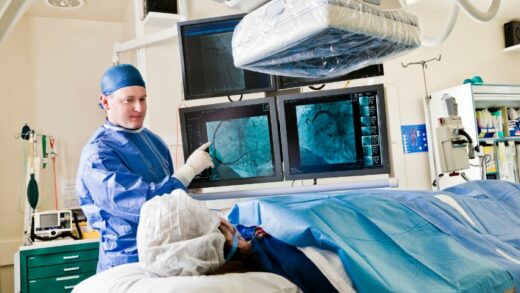Stem cells are unique cells that have the potential to develop into various specialized cell types in the human body. These cells have gained considerable attention in the scientific community due to their role in regenerative medicine, disease treatment, and tissue engineering. The ability of stem cells to differentiate into different cell types has opened up new avenues for researchers to explore their therapeutic potential.
The Role of Stem Cells:
Stem cells play a critical role in the human body by acting as a repair system. They have the ability to self-renew and differentiate into various specialized cells, such as nerve cells, muscle cells, and blood cells. Stem cells are responsible for repairing and replacing damaged tissues, which is essential for maintaining the normal function of the body.
Types of Stem Cells:
There are two main types of stem cells: embryonic stem cells and adult stem cells. Embryonic stem cells are derived from embryos, while adult stem cells are found in various tissues and organs in the body. Adult stem cells are responsible for maintaining and repairing damaged tissues, while embryonic stem cells have the potential to differentiate into any cell type in the body.
Role of Stem Cells in Regenerative Medicine:
Stem cells are being investigated for their potential use in regenerative medicine. Regenerative medicine involves the use of stem cells to repair and replace damaged or diseased tissues in the body. This field of medicine has the potential to revolutionize the way we treat various diseases and injuries.
Stem Cells and Tissue Engineering:
Tissue engineering is another field that is benefiting from stem cell research. Stem cells are being used to develop new tissues and organs in the laboratory, which can then be transplanted into patients. This approach has the potential to overcome the shortage of donor organs and tissues, which is a major problem in healthcare.
Stem Cells and Disease Treatment:
Stem cells are being investigated for their potential use in treating various diseases, such as Parkinson’s disease, diabetes, and heart disease. In the case of Parkinson’s disease, stem cells are being used to replace the damaged nerve cells that cause the symptoms of the disease. In diabetes, stem cells are being used to produce insulin-producing cells that can regulate blood sugar levels. In heart disease, stem cells are being used to repair damaged heart tissue.
Stem Cell Therapy and Its Potential:
Stem cell therapy is a promising area of research that has the potential to transform modern medicine. Stem cell therapy involves the use of stem cells to treat various diseases and injuries. It is still in its early stages, but it has already shown promising results in clinical trials.

FAQs:
What are the potential benefits of stem cell therapy?
Stem cell therapy has the potential to treat a wide range of diseases and injuries, including Parkinson’s disease, diabetes, heart disease, and spinal cord injuries.
What are the ethical issues associated with stem cell research?
Embryonic stem cell research is controversial because it involves the use of embryos, which some people consider to be unethical.
What is the difference between embryonic stem cells and adult stem cells?
Embryonic stem cells are derived from embryos and have the potential to differentiate into any cell type in the body. Adult stem cells are found in various tissues and organs in the body and are responsible for maintaining and repairing damaged tissues.
What are the challenges of using stem cells in regenerative medicine?
One of the biggest challenges in using stem cells in regenerative medicine is ensuring that the cells are safe and effective. There is still much that researchers do not know about how stem cells work, and more research is needed to fully understand the risks and benefits of using stem cells in clinical applications.
How can stem cells be used in tissue engineering?
Stem cells can be used in tissue engineering to create new tissues and organs in the laboratory. The cells are first isolated and then grown in a culture medium that encourages them to differentiate into the desired cell type. Once the cells have differentiated, they can be used to create the tissue or organ that is needed.

Conclusion:
Stem cells play a critical role in the human body, acting as a repair system that maintains the normal function of the body. They have the potential to revolutionize modern medicine by providing new treatments for a wide range of diseases and injuries. While there are still many challenges to overcome, the potential benefits of stem cell therapy are enormous, and researchers are working hard to unlock its full potential. As we continue to learn more about the role of stem cells in the human body, we can expect to see exciting new developments in the field of regenerative medicine in the coming years.






















